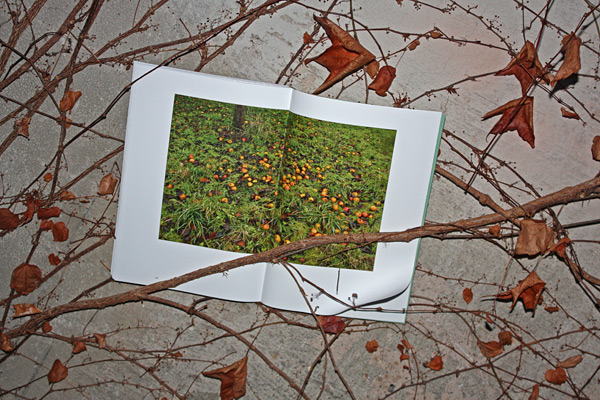
At the latest since shortly after her husband came into office Michelle Obama had a vegetable garden dug in the White House – to much media limelight – it was clear that the symbolism of the garden had reached new heights. In an age of globalization and digitalization, the garden is an expression of a return to thinking about things natural authentic, regional and earthly. A garden is visible proof that you can take things into your own hands, assume responsibility for other creatures, and are aware of your obligations toward future generations. The garden which you tend for many years does not automatically deliver results immediately and revolts against and fast responses that have become the only sense of reward in an era of an economics of attention-seeking. Where foodstuffs get flown around the globe, your own vegetable patch stands for an idea of local self-supply and thus for a return to reason. At the same time, a garden can be a quite irrational luxury, creates a refuge or a haven for your dreams, an irrational, seemingly out-of-synch project that it, above all, thoroughly non-digital, but hands-on. After all the enthusiasm for cooking, so many trend gurus prophesied quite a while ago, it would be the garden's turn. And in fact over the last two decades people have been paying an awful lot of attention to their gardens: trend-conscious urbanites have rediscovered allotment gardens. In the urban world, innumerable garden projects have been kicked off, such as Berlin's "Prinzessinnengarten". High-rises like the Commerzbank Tower in Frankfurt designed by Norman Forster came with huge themed gardens. Innumerable facades have been given a green face in the form of Patrick Blanc's "mur végétale". The roof garden has become a new hobby for urbanites and "urban farming" is considered the next big thing waiting to happen. Flower stores have morphed into perfectly designed lifestyle experiences. At Germany's Manufactum stores, incredibly expensive hoes and trowels art going like hot potatoes, tools not even a pro gardener would manage to trash in the course of a career. Magazines such as "Landlust" achieve print runs that others can only dream of and the recently launched "The Plant Journal" is devoted solely to the relationship between urbanites and flora. Books such as "Mies als Gärtner" are exploring the meaning of the plant world in the oeuvre of the grand masters of Modernism. And when it comes to occupying urban space, guerilla gardening has emerged as a trend that holds its ground alongside urban interventions like flash mobs or guerilla knitting and has turned gardening from a musty-dusty activity into a cool hobby. Recently, a book came out on the multiplicity of social and cultural aspects of establishing your own garden: "Versuche das Glück im Garten zu finden", edited by Franziska Bark Hagen and Günther Vogt from the ETH Zurich's Architecture Department. The book's title of "find happiness in the garden" shows that creating your own garden always involves the hope that you are staking out a clearly demarcated space of happiness and a better life, a planted utopia. In eight essays, Bark Hagen and other authors address the diverse strategies of founding a Garden of Eden, a circumscribed place of perfection, that is, as it were, outside the world, and becomes a small paradise which lets you firmly and forcefully forget the ugly reality on the other side of the garden fence. Paradise, Bark Hagen suggests, should be read as an "instructions for experimentation and action in the sense of cultural praxis". And thus in their essays the authors focus on the real places of this cultural praxis but also point to aspects that address to the topic's religious or social margins. For example, they concern themselves with the importance of the garden in Islamic culture and in how this is expressed in garden mats that offer the person praying on them a different view of the world. They forge links between promises of paradise and consumer culture or visualize the fact that chlorophilia, that unconditional love of plants, has long since ceased to be private domain and has established itself in collective actions and made inroads in the guise of urban common gardens. They describe "war gardens" in which US GIs created symbolic 'lawns' made of green plastic sheeting in their camps during the Gulf War, in this way fostering the illusion of an Elysian home in a place where peace failed to prevail. Or devote themselves to the 1970s magazine the "Whole Earth Catalog", which can be considered the grandfather of Web search engines and back then already enabled readers to compose the utopia of a better world from individual items – and thus likewise relied on the concept of Paradise. These are highly readable intelligent essays on the subject, which, cutting across all the trends, assign the refound interest in the garden in many cultural, historical and contemporary contexts and also make it clear to the reader that all the writers can offer are a small section of what is happening, a subjective selection of themes. The essays shed new light on well-known things, and analyze the variety of sides to the topic – as an attempt to break out of our everyday worlds and create a Paradise on earth, albeit one, as Günter Vogt writes in his preface, that must inevitably remain a utopia. Because the garden is always only a place of temporary happy moments, and first and foremost an expression of our yearning for Paradise. It always brings with it the transience of the living and remains an exceptional situation condemned to wither. Versuche das Glück im Garten zu finden
By Franziska Bark Hagen
Edited by Günther Vogt of ETH Zürich
Softcover, 152 pages, German
Lars Müller, Zurich, 2011
Euro 28
www.lars-mueller-publishers.com





















